TOLEDO, Ohio — When you think of October in the Midwest, you likely imagine not just beautiful colors and decorated pumpkins, but also chilly temperatures and frosty mornings. Even though October is well past the halfway point, the first frost of the season has yet to arrive.
With frost in the forecast for Monday morning, this week's Climate Friday will prepare you for what's to come and explain the link between climate change and fall frost and freeze.
Subscribe for more weekly content from WTOL 11 Meteorologist John Burchfield.
Frost occurs when temperatures dip down to the 30s and thin ice crystals develop on surfaces such as grass and trees. Similar to dew, frost develops in the morning when the air becomes saturated and moisture in the form of water vapor collects on objects near the chilly surface of the Earth.
Frost typically occurs at temperatures of 36 degrees and below, the threshold we will use in this article. A freeze happens when temperatures dip down to 32 degrees or colder, and a hard freeze refers to 28 degree temperatures, which can be deadly to outdoor plants and farm crops.

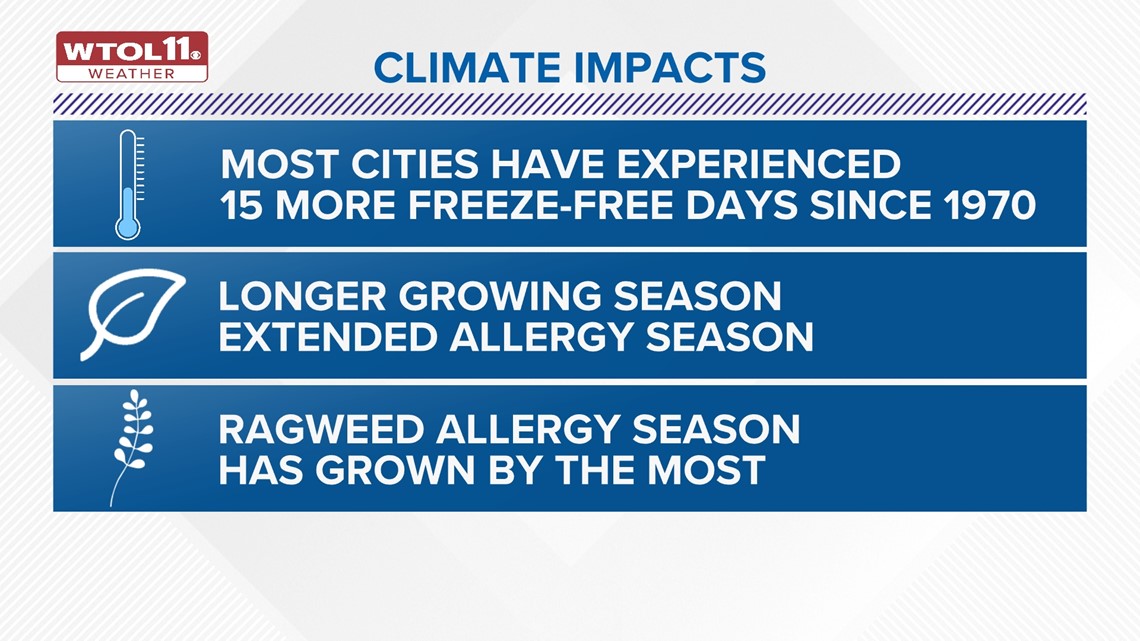
So far, both frost and freeze have remained elusive this season. The coldest temperature recorded thus far this autumn is 41 degrees, which occurred on the mornings of Oct. 8, 17 and 18.
This year is far behind schedule, and the first frost of the season typically occurs on Oct. 6 in the Toledo metro. The first frost ordinarily happens a bit earlier in southeast Michigan and a bit later along the lakeshore due to the warmer marine layer of air near the milder waters of Lake Erie.

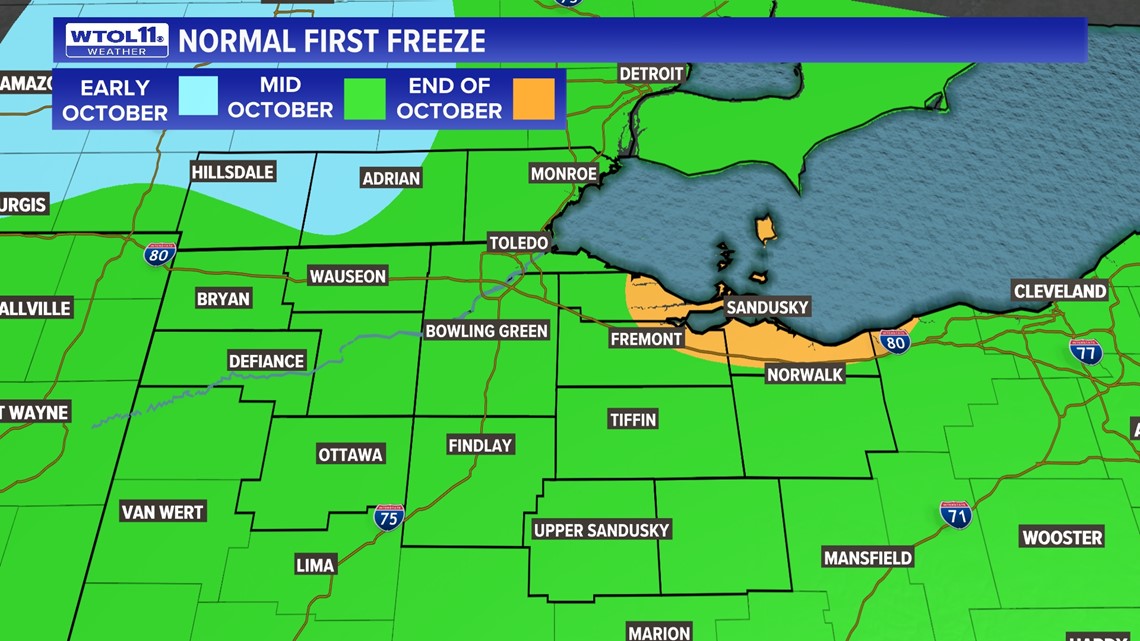
Despite the late start to the frost season, the WTOL 11 weather team is forecasting likely frost Monday morning with temperatures in the mid-30s inland from the lake. Frosty conditions are most likely northwest of Toledo, but may occur across the entire region.
While this fall has started off slow in terms of chilly overnight low temperatures, some seasons have featured unusually mild autumns with a very late first frost. In 1897, the first frost of the year didn't occur until Nov. 3, the latest on record in Toledo history.

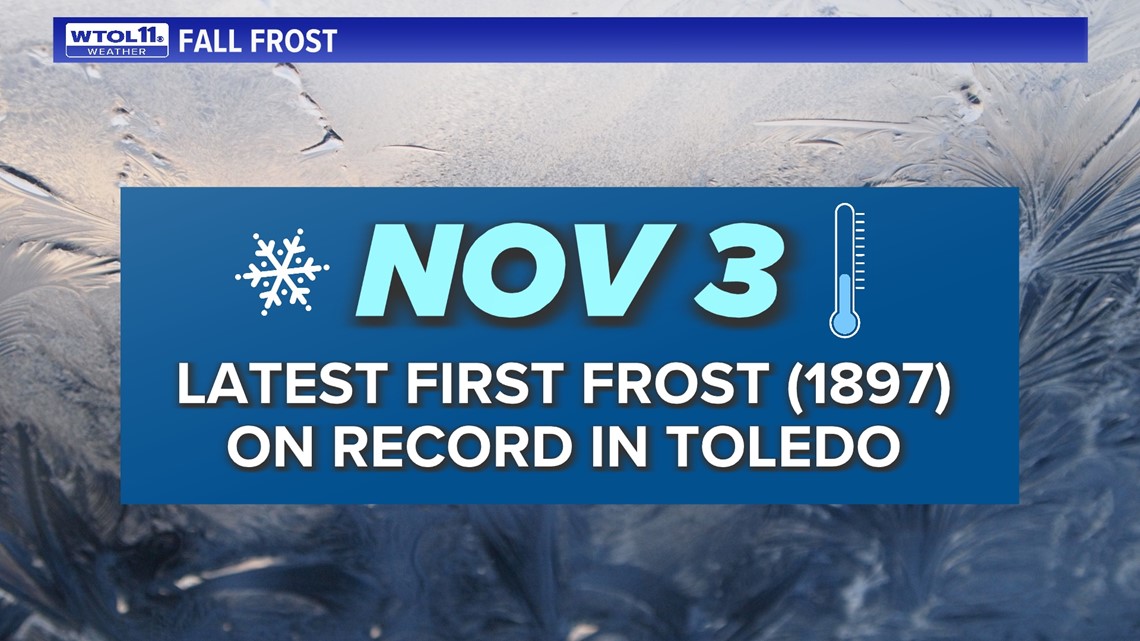
On the other end of the spectrum, frost can sometimes strike early, and occurred on Aug. 29, 1982, the soonest on record. Though a 36 degree frost has happened in August, the earliest freeze on record happened on Sept. 14, 1975. Temperatures dipped down to 32 degrees before summer even officially ended.
The latest ever first freeze occurred on Nov. 15, 1915, when the first 32 degree reading wasn't until closer to Thanksgiving. These numbers demonstrate the year-to-year variability in the weather and extremes on both ends of the spectrum.
So how is climate change impacting fall frost and freeze, and what can you expect in the future? Overall, fall is growing warmer and frost is occurring later, a trend that likely doesn't surprise you given the warming of autumn temperatures. Data from over 200 different cities across the country shows a 15 day increase in the number of annual freeze-free days since 1970.
Toledo has seen an even greater expansion of the growing season, which is reflected in a significant 28 day increase in freeze-free fall days. While area farmers have noticed the lengthening of the growing season marked by fewer freezing fall days, all individuals have been affected by this change.

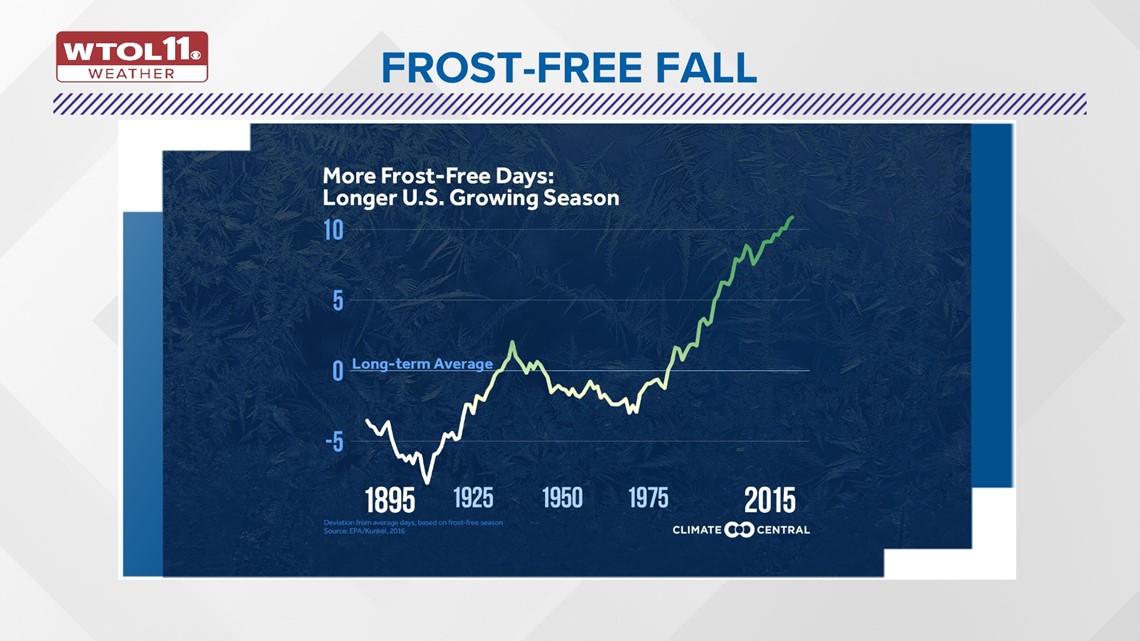
A longer growing season leads to an extension of autumn allergies, especially ragweed, which is a common late-season allergen. As fall frost and freeze grow later and later, on average, fall allergies may continue to bother you well into October and even November.

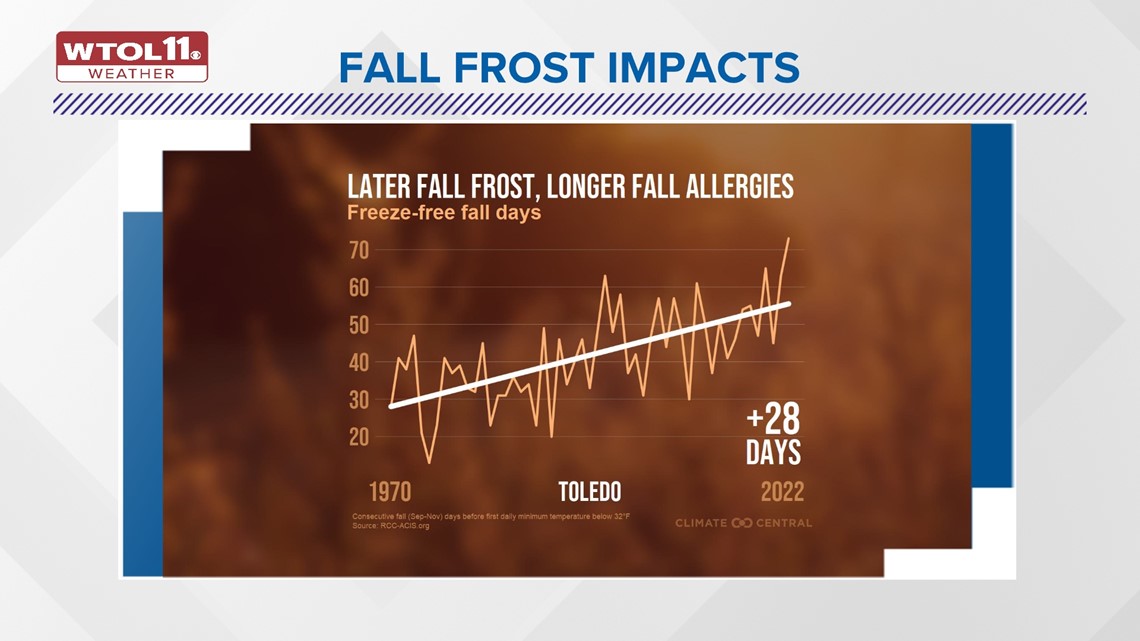
While the overall impact of climate change is clear, seasonal weather patterns cause year-to-year variation in frost and freeze dates.
Though this fall has yet to bring morning frost, temperatures will dip down to the 30s Monday morning. The first widespread frost of the season is expected with temperatures below 36 degrees in many areas. As we round the corner from October into November, stay tuned to the WTOL 11 Weather Team and subscribe to the Climate Friday Newsletter for the latest.
MORE FROM CLIMATE FRIDAY ON WTOL 11

